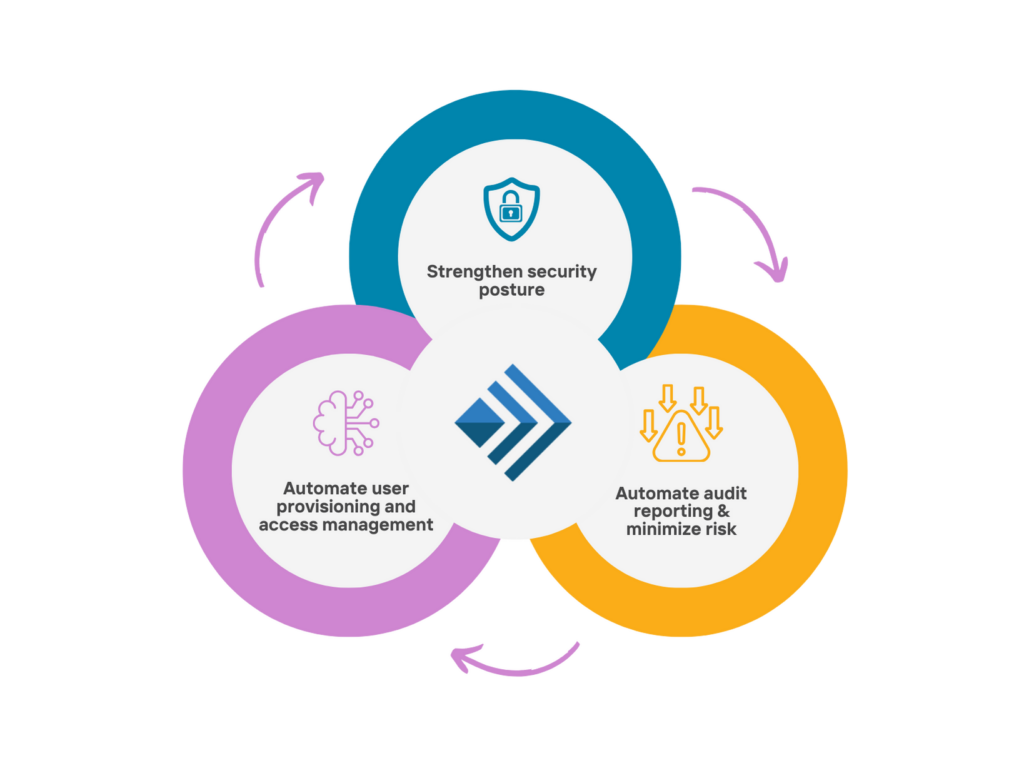
With healthcare providers contending against growing information security risks and the rigors of regulatory compliance, identity administration solutions are emerging to bring sanity to chaos. In the wake of the pandemic, users ranging from caregivers to patients have started demanding better online experiences. These experiences must be backed up with assurances of their sensitive data being protected.
Accountable care organizations proliferate to create a sustainable network for patients in need, widening mutual vulnerabilities. Day-to-day hospital operations grow more complex due to the integration of multiple IT and identity vendors, hampering efficiency and creating friction. More and more patients access their sensitive records electronically, creating new touchpoints for potential cyber incidents. All these factors must be addressed if a healthcare-oriented organization is going to be secure, compliant, and successful.
Only by intelligently implementing identity administration can healthcare providers ensure timely and proper access to applications, files, and data. Consider these five identity challenges faced by healthcare providers and practitioners. Identity governance and administration (IGA) is a lifeline for securing employees, patients, data, records, and apps.
Managing Multiple Authoritative Sources
Many caregiving organizations have multiple authoritative sources for data. These include human resource applications, electronic health record systems (EHRS), learning management systems (LMS) and physician credentialing applications. The provider organization designates these and other applications as the true source for defining user identity and access rights. However, managing multiple identity sources and their access rights creates difficulty in ensuring consistent execution of policies and resource optimization.
Identity administration remediates this issue by consolidating these siloed systems into a single unified source of truth. Under this monolithic solution, a single definitive database collects all authority sources. This provides transparency, accessibility, and consistency across all activities. This, in turn, reduces the likelihood of a costly data breach by shrinking the attack surface. Additionally, the administration solution expedites account onboarding without compromising security, enabling quicker turnaround on new patients and employees. Unlike basic IAM solutions, IGA provides definitive and decisive controls over permissions, policies, and their enforcement.
Identity Administration for a Diverse User Population
The typical healthcare-provider setting hosts a diverse and transient population requiring access to health information as part of their regular workflow. This may include doctors, nurses, contracted physicians, students, volunteers, vendors, and many others. Ensuring the right people have the right access at the right time is a daunting task. However, the consequences for not doing so can create security gaps with serious financial and operational repercussions.
Automation in an identity governance solution is the core of efficiency, and the most effective means of tackling the diversity of users. Identity administration enables providers to gain visibility and control of their entire spectrum of diverse data users, creating a simplified and consistent approach. Rather than manually doling out access, an automated provisioning solution checks against a user’s profile and grants access as needed. Systems like adaptive MFA and SSO can further augment this function. Furthermore, the automation can be set up to include curation, automatically scanning accounts for inappropriate access or inactivity. Thus, the danger posed by orphaned accounts can be eliminated wholesale.
Multiple Roles/Personas in an Identity Administration Framework
Personas – individual roles or bundles of entitlements – help to build an identity by defining the different ways in which an individual engages a provider organization. In some cases, an identity may have multiple personas. For instance, consider the healthcare provider ecosystem. Physicians, nurses, professors, researchers, contractors, volunteers, and students are just a handful of job functions that may be present in one hospital. Yet many individuals can perform more than one function during any given day. To illustrate, a unit clerk in the emergency department may also be a nursing student who is doing a clinical rotation in the ICU. A physician may have an outpatient clinic in the morning and perform research work in the afternoon. Also, nurses may float between departments. To complicate matters, many of these functions can be transient.
By implementing a centralized identity governance platform which includes a PAM solution, healthcare enterprises provide adequate coverage for privileged access needs. Through close adherence to the principles of RBAC, users can be provisioned quickly and easily according to their status. Additionally, this avoids possible critical security gaps such as segregation of duty violations. This is particularly important for the provisioning and deprovisioning process. These features greatly reduce the potential vectors for cyber incidents via inappropriate permissions without creating friction or incurring additional costs.
Consolidating Disparate Processes
A single department or team does not always manage user access. At the same time, it is often managed through functionality native to the specific application. This creates disparity in processes that leads to security gaps and unnecessary burden on IT administrators and application owners. For instance, a contracted physician may be given access to the EHRS. However, due to accidental oversight, the physician is locked out of enterprise content management system. This prevents them from accessing scanned clinical media and photos. As a result, the physician’s efforts to fully understand a patient’s condition and provide timely care may be delayed.
Identity administration removes the barriers between applications and users by intrinsically connecting them via the central identity platform. When a single authoritative source (such as Simeio’s Identity Orchestrator) manages all identity functions, the issue evaporates. When siloed resources are the main source of friction, removing those silos becomes paramount to the pursuit of user satisfaction without compromising data integrity. This is doubly important for the consistent execution of security access protocols.
Leveraging Identity Administration Effectively
Identity administration is the key to enabling a healthcare organization’s operations. By implementing a single centralized view of the entire identity fabric, managing users and their associated privileges turns from a patchwork stopgap into a sleek and efficient process. Between streamlining provisioning processes and definitively determining who should have access to what and when, a strong identity administration solution provides quick and recognizable value.
Through identity administration, providers can better cope with the complexities associated with the current healthcare IT ecosystem and successfully scale to future requirements.
To get more details about identity administration for the healthcare environment, contact a Simeio identity advisor and learn how to start on your own digital transformation.
